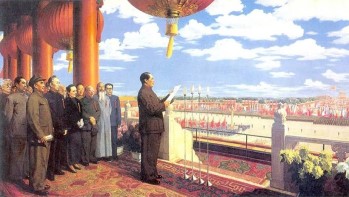
The artworks produced during the Mao period (1949-1976) are ubiquitously seen as just propaganda, with complete condensation of the artist's position, accompanying practices or institutional spaces. This paper attempts to fill that lacuna by providing a constellation of the given epoch's diverse social, cultural, and aesthetic assemblage. It follows the trajectories of academic artists in China who worked with Konstantin M. Maksimov, the Soviet Art Educator. This academic training in Socialist Realism transgresses the contours of painting as a medium with foundational continuity visible in posters. Therefore, posters produced during this time are incredibly diverse in themes, and some are easily mistaken for paintings. This study examines the transition of art style from “importism” to developing a unique vocabulary separate from the Soviet model. A close analysis of these collections reveals the departures from earlier Soviet influences to a more contextual language specific to China.
Keywords: Chinese art, Socialist Realism, Mao period, Chinese propaganda posters, Xuānchuán, Art History
© 2019 ICS All rights reserved.
Powered by Matrix Nodes